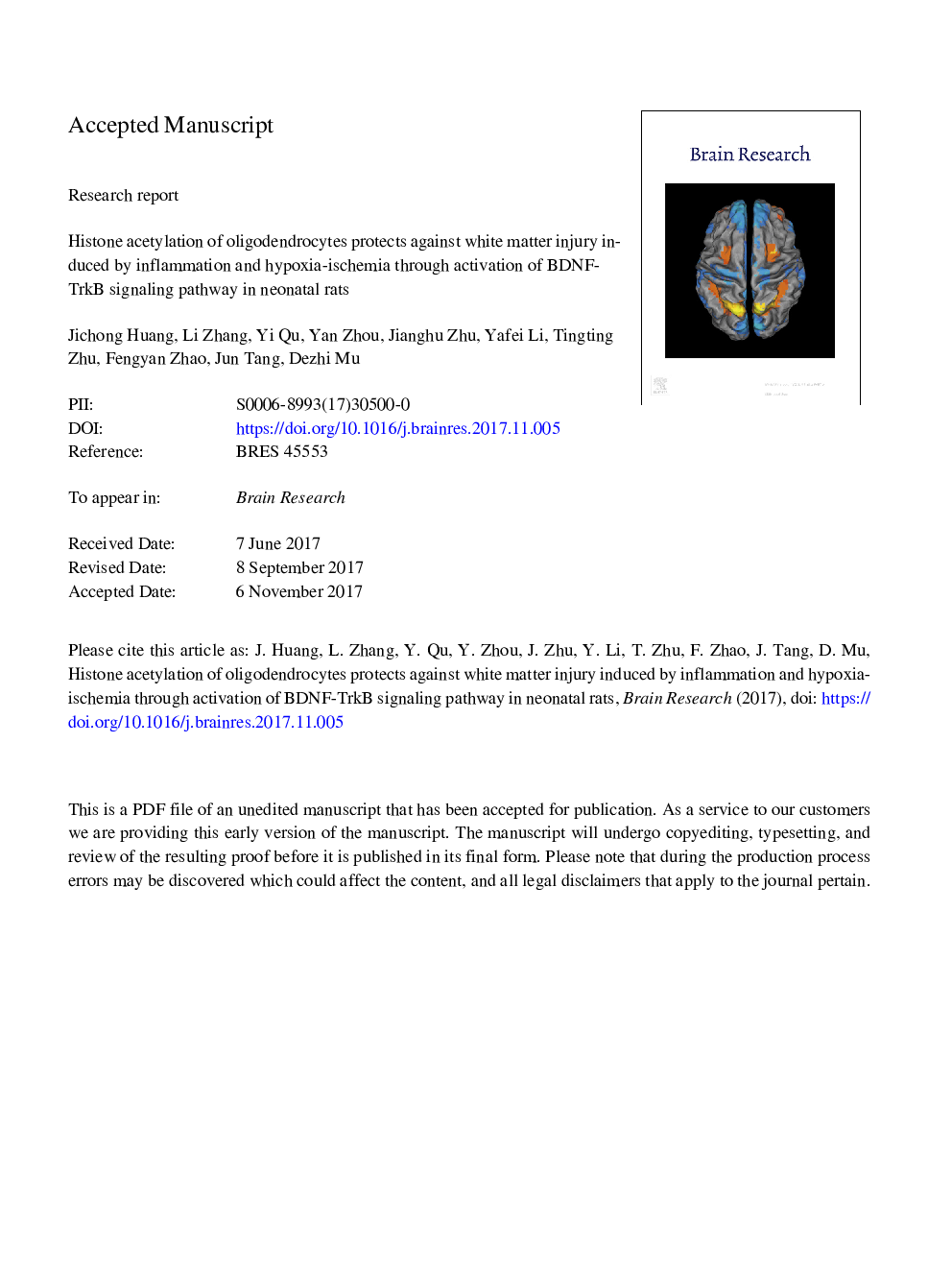| Article ID | Journal | Published Year | Pages | File Type |
|---|---|---|---|---|
| 8839810 | Brain Research | 2018 | 49 Pages |
Abstract
The major pathological damage in encephalopathy of prematurity is white matter injury (WMI). Perinatal hypoxic-ischemia (HI) and inflammation are two major risk factors in the development of WMI. To study the cellular and molecular mechanisms of WMI, we set up a WMI model using lipopolysaccharide-sensitized HI injury in 2-day postnatal rats. Immunofluorescence staining was used to measure the expression of acetylated histone H3 (AH3) in oligodendrocytes, the target cells of WMI; the oligodendrocyte protein markers, NG2, O4, MBP, PLP, and MAG, were detected at different developmental stages. 5-bromo-2â²-deoxyuridine (BrdU) was used to detect the proliferation of oligodendrocytes. We found that the expression of AH3 was markedly decreased in oligodendrocytes at 7â¯days after WMI. The differentiation and maturation of oligodendrocytes were inhibited in the WMI group. After inducing histone acetylation in oligodendrocytes by treatment with sodium butyrate, the inhibition of differentiation and maturation of oligodendrocytes was reversed. Furthermore, we found that these protective effects of histone acetylation were associated with the upregulation of brain-derived neurotrophic factor (BDNF) and its receptor, tyrosine kinase B (TrkB). In conclusion, histone acetylation protects oligodendrocytes from WMI through activation of the BDNF-TrkB signaling pathway in immature brains.
Keywords
Corpus callosumLPSPLPWMIMBPp-CREBHDACMAGSVZ5-bromo-2′-deoxyuridineBDNFH&EProteolipid proteinWhite matter injuryHistone acetylationHypoxic-ischemiaBrdUSodium butyratedentate gyrusBrain-derived neurotrophic factorlipopolysaccharidesubventricular zonehaematoxylin and eosinMyelin basic proteinMyelin associated glycoproteinoligodendrocytes
Related Topics
Life Sciences
Neuroscience
Neuroscience (General)
Authors
Jichong Huang, Li Zhang, Yi Qu, Yan Zhou, Jianghu Zhu, Yafei Li, Tingting Zhu, Fengyan Zhao, Jun Tang, Dezhi Mu,
